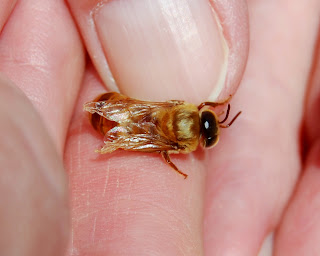Mark Childrey successfully caught a large swarm of honey bees and carefully moved them to a nice bee hive. He was disappointed, however, when the bees flew away an hour later. This cannot always be avoided, because honey bees are wild animals. There are some techniques that can help encourage a swarm of bees to accept a hive. In areas where Africanized honey bees are not established, it is usually safe to use swarms to replace winter losses of colonies and to expand the bee yard. If the swarm is caught early in the day, wait until late afternoon to place it in a hive. The swarm can be held in a vented cardboard box in a cool, dark, place until time to place the bees in their new hive. Since the bees don’t fly in the dark, they will settle down quickly in the evening. Before introducing the bees, spray the inside of the hive and the frames with sugar water. Placing a frame of open brood from another colony inside the new hive will usually ensure the bees will accept their new hive. The brood gives off pheromones that are quite attractive to the bees. If one frame of drawn comb is available, the queen will be able to begin laying eggs immediately; and the colony will expand rapidly. Honey bees, at the time of swarming, are physiologically geared-up to produce beeswax. If the beekeeper will supply the newly hived swarm with a feeder of syrup, they will rapidly fill the frames with comb. As a means of preventing the spread of American foulbrood, swarms should be hived on foundation so that they will consume all of their honey, which may hold AFB spores.
Today’s picture shows a hive holding a swarm that I collected this week. The bees are hived in a single hive body with a hive-top feeder. Grass blocks the hive entrance, holding the bees until they can chew their way out.
--Richard















